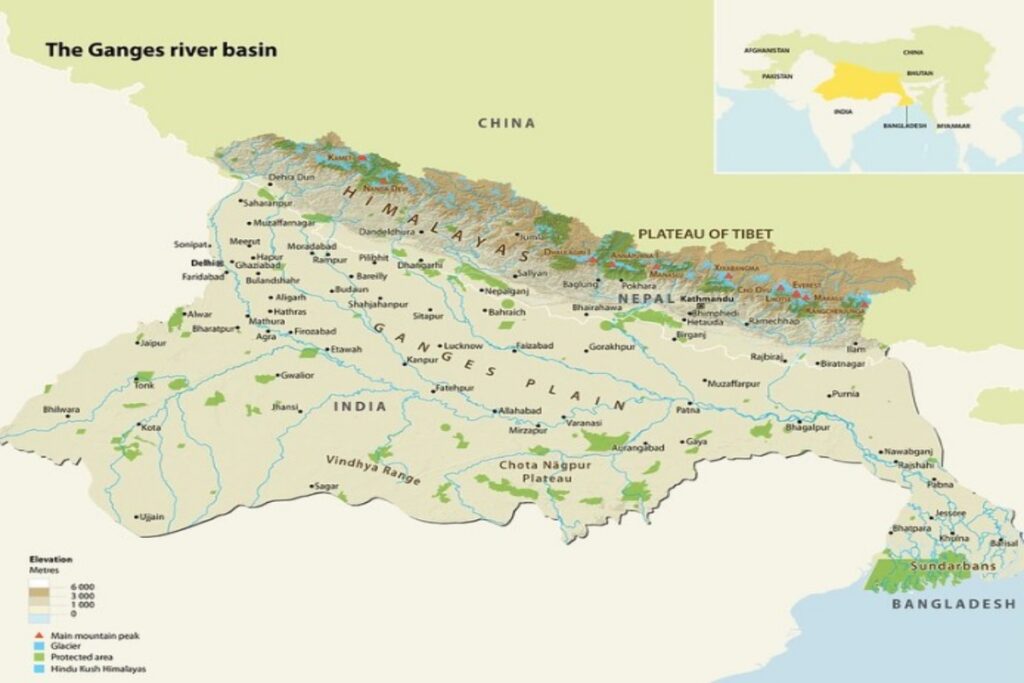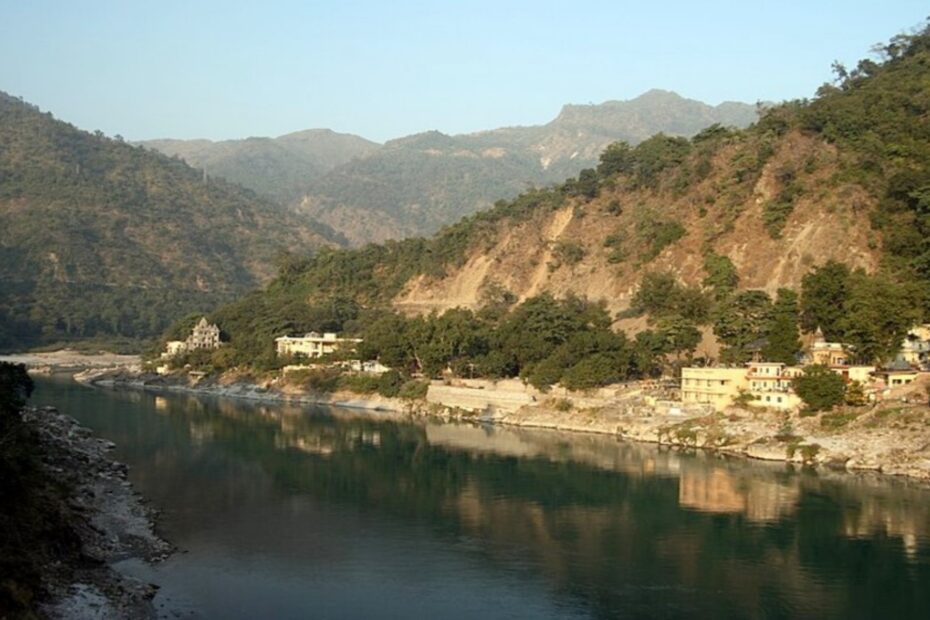No one can deny the fact that India is a land of rivers. Also, it will not be an overstatement if I say that its waterways shape the country’s geography. Also, rivers play a crucial role in the history and culture of the nation. Do you know, which is the longest river in India? Yes, you have guessed it right! It is the Ganga or the River Ganges. This river stands as a symbol of sustenance, spirituality and life. I am here through this post to discuss in detail about this river. You can understand its origins, geographical importance, tourist attractions and a few fascinating facts about this river from this post:
Name and Location of India’s Longest River
As you know, the Ganges or the Ganga River is the longest river in India. Do you know why is the longest in the country? It is because it travels nearly 2525 km or 1569 miles across north India. You will be surprised to know that it even reaches Bangladesh. It flows through a few of the most historically important and densely populated regions of India. It connects millions of people with its life-giving waters.
River Ganga originates from the Himalayas and has a vast delta in the Bay of Bengal. Apart from being seen as a river, the Ganga is seen as a divine entity in Hinduism. Again, a surprising fact about this river is that it flows through 5 states in India. They are West Bengal, Jharkhand, Bihar, Uttar Pradesh and Uttarakhand. It means that it is an integral part of the economy and culture of people in these Indian states.
Where Does The Longest River in India Start and End?
The journey of the longest river in India begins at Gangotri Glacier. This glacier is located in the state of Uttarakhand. Particularly, the origination happens at the Bhagirathi River. This river is a flowing stream fed by melting glacial ice. However, the official start of the river is where the Bhagirathi and Alaknanda rivers converge. This place is called Devprayag, which is in the Tehri District of Uttarakhand. As Devprayag is located on the way from Rishikesh and Badri, pilgrims visit this place in large numbers.
From its sacred beginnings, the river meanders through the northern plains. Through its flow, it nourishes the land with abundant water and fertile soil. Finally, the river reaches its destination at the Sundarbans Delta. This is one of the world’s largest and most biodiverse deltas. Finally, it falls into the Bay of Bengal.
How is The Ganga Geographically Important?
In addition to its religious importance, this longest river in India is known for its geographical importance as well. Yes, it plays a considerable role in shaping not only the atmosphere and geography but also the livelihood of the lands it passes through. Here are some factors that make the Ganga geographically important:
Fertile Plains

The Ganga Basin holds the pride of being among the most fertile regions in the world. It supports agriculture for millions of people. Its annual flooding replenishes the soil, thereby making it ideal to cultivate crops like sugarcane, wheat and rice. Thankfully, farmers from the Ganga Basin are producing these crops in large quantities.
Water Resource
The Ganga is an essential source of water not only for industrial use and irrigation but also for drinking. Yes, many cities in northern India rely on this river for drinking water. Water from this river sustains cities like Kolkata, Varanasi, Allahabad Prayagraj and Kanpur to name a few.
Ecosystem Support

The Ganges supports a diverse ecosystem. It protects the most endangered Ganges River Dolphin. Yet another support extended by this river is to the Sundarbans Delta. This delta is formed by rivers Brahmaputra and the Ganga. It is the home to the popular Bengal tiger and many other unique mangrove species.
Transportation and Trade
Since ancient times, the Ganga has been a crucial transportation route. You will be surprised that it is even used today to transport goods and people. In turn, it enhances the economic connectivity in the region through its vital waterways. However, at times, water transportation is stopped to safeguard the waterways from damage.
Top 5 Tourist Attractions On River Ganga
Apart from supporting the ecosystem, the Ganga also supports tourism. It is a key attraction for tourists from across India. Due to its geographic location, it even attracts foreigners. The region is popular for the spiritual experiences it provides. Also, foreigners are attracted to its cultural heritage and natural beauty. Here are the names of 5 key attractions on the River Ganges:
1. Gangotri
The Gangotri Temple is located near the glacial origin of the Ganges. It is visited by pilgrims in large numbers as it is a sacred site for the Hindus. During their Char Dham yatra, pilgrims visit this place. They believe that they can get the blessings of Goddess Ganga by visiting this place. The nearby Himalayan landscapes offer trekking opportunities and breathtaking views as well.
2. Varanasi

You might have heard that Varanasi is one of the oldest cities in the world. It is often seen as synonymous with the River Ganga. The ghats or riverbanks of Varanasi, particularly the Dashashwamedh Ghat are where the evening aarti ceremonies are conducted. The city attracts tourists looking for cultural experiences and spiritual solace. A dip in the river Ganga is concerned holy by pilgrims. It is believed that all your sins will be washed away immediately on your dip into this holy river.
3. Prayagraj, Allahabad
Prayagraj is the place, where the convergence of three rivers happens. They are the Ganga, the Yamuna and the mythical Saraswati River. This place is seen as a place of spiritual significance. It is popular for its Kumbh Mela Festival. Conducted 4 times over 12 years, this is one of the largest religious gatherings in the world that draws millions of tourists and devotees. However, Kumbh Mela is not conducted in Prayagraj every year. The place is decided based on planetary positions every time. Particularly, the position of Jupiter, Sun and Moon is considered.
4. Sundarbans Delta
As mentioned earlier, the Sundarbans Delta is the place in which the Ganga meets the Bay of Bengal. The interesting thing here is that this place is a UNESCO World Heritage Site. It offers a unique confluence of picturesque waterways, mangrove forests and wildlife safaris. The allure of this place is enhanced as it provides a chance for visitors to spot the elusive Bengal Tiger.
5. Haridwar
Another major attraction along the path of the longest river in India is Haridwar. This pilgrim attraction is known for the Har Ki Pauri Ghat. In this place, you can find devotees performing rituals and immersing in the river. Yet another interesting thing about Haridwar is that it serves as a gateway to the Himalayan shrines of Uttarakhand State.
Interesting Facts About River Ganga
You will be fascinated by some interesting facts about the longest river in India. Here are a few interesting facts:
- Sacred River: The River Ganga is considered the holiest River in Hinduism. Hindus believe that bathing in this river will wash away their sins.
- World’s Largest River Delta: The Ganges and Brahmaputra River system forms the world’s largest delta system. It empties into the Bay of Bengal.
- Densely Populated Basin: You will be surprised to know that the Ganges River Basin is the home to more than 650 million people. So, it is the world’s most densely populated river basin.
- Nutrient-Rich Sediment: The Ganges carries nutrient-rich sediment as it flows. This has allowed cultivation in this region to thrive. This has happened and continues to happen along the banks of the river for many centuries now.
- Many Tributaries: The Ganges has many tributaries that originate in other countries. Yes, its tributaries are in Tibet, Bangladesh and Nepal.

- The Confluence: In Prayagraj Triveni Sangamam, the Ganges converge with the Yamuna and Saraswati Rivers. This is considered a holy confluence in the Hindu Religion.
- River Dolphins: Yet another interesting fact about the Ganga River is that it is the home to River Dolphins. This is seen as the most endangered species.
Even though these are some interesting things about the longest river in India, unfortunately, threats surround this river. Yes, many threats like barrages, dams, over-extraction of water for farming and pollution disturb the natural flow of the river. Many complaints have been raised by the locals about the dirty condition of the river in some areas. However, efforts are made by the local government to preserve the holiness of the river by taking corrective actions.
Conclusion
The River Ganges is more than a geographical feature. Apart from being the longest river in India, it is a living entity that has deeply intertwined into the identity of India. From its sacred beginnings in the Himalayas to its expansive delta, the river nourishes the land. Also, it plays a major role in enriching lives and supporting diverse ecosystems. Its significance is intertwined with the culture and spirituality of India!
Check out my other posts on Uttarakhand:
Best Resort in Jim Corbett? Aahana Resort – Where Luxury meets Responsibility
River Rafting in Rishikesh – A Tryst with Ganges
Uttarakhand Itinerary – How to spend 2 weeks in heaven?
7 Reasons why Rishikesh might be perfect for a backpacker
Things to do in Rishikesh | 18 Awesome experiences in Rishikesh
